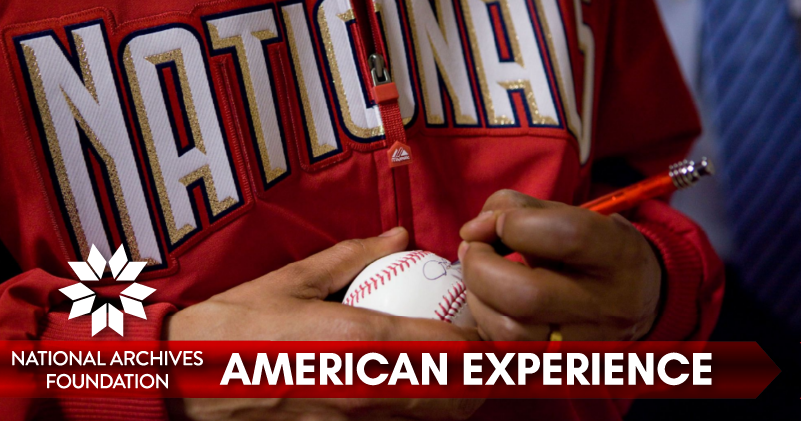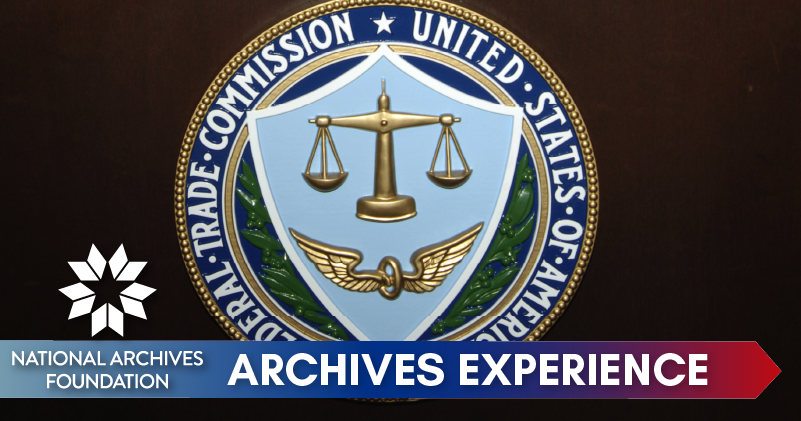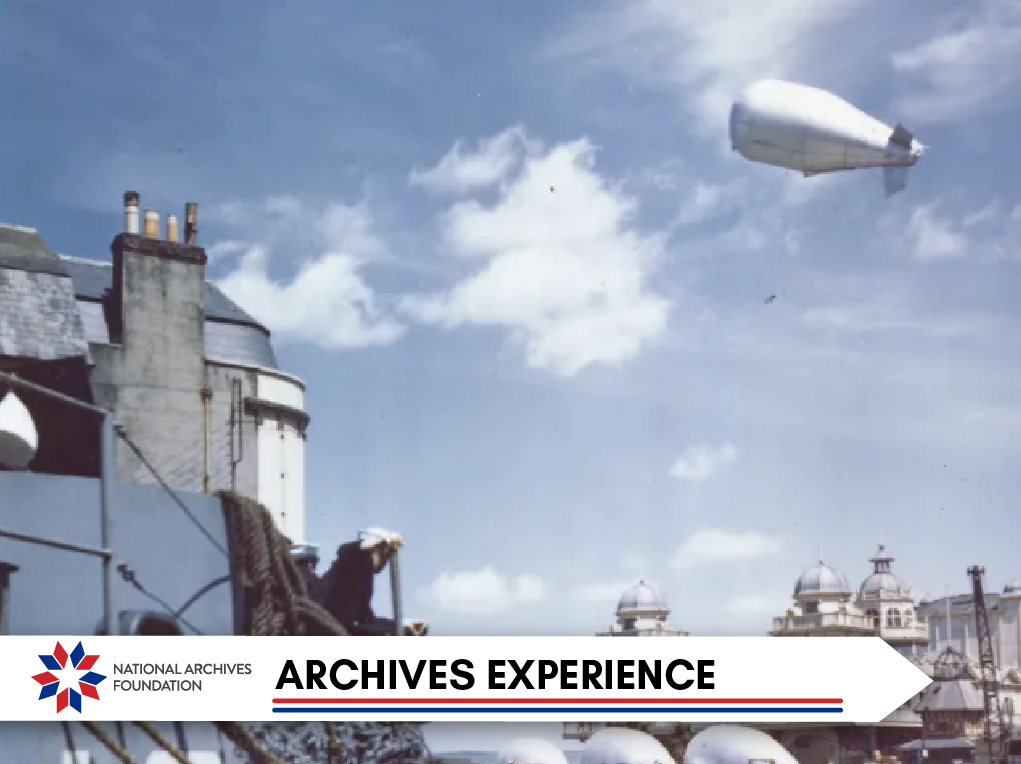A Home Run of Records

I grew up in a baseball household. My dad played baseball in college. My uncle played minor league baseball. I did my part in little league. And of course, baseball was a source of many debates at family gatherings.
Despite that childhood exposure to the grand old game, when I got to the Archives Foundation, I discovered there was much to uncover about our nation’s pastime in the Archives:
- Only three First Ladies have thrown out the first pitch – Nancy Reagan, Barbara Bush, and Michelle Obama.
- In the 1880s, tobacco companies started the baseball trading cards (also actresses, opera stars and other cultural figures with their own cards). When these companies stopped producing them, candy companies took over.
- In 1942, President Roosevelt gave the “green light” for the 1942 season to proceed after Pearl Harbor and the U.S. entry into the WWII.
- There are many photos of baseball being played in Japanese-American internment camps.
- Inventors submitted some crazy patent designs for baseball equipment. (See below.) Fortunately, most never caught on commercially.
…just to name a few.
This week we are throwing you our best records fastball-style. We hope we’ve knocked it out of the park!
Play ball!
⚾️

Patrick Madden
Executive Director
National Archives Foundation
P.S. For all you sports fans, there’s more where this came from. Keep an eye out “All American”, the history of sports exhibit that will open in Fall 2022.
Little Sluggers

Three Little League Players Dive for the Ball on the South Lawn During the Opening Game of the 2006 Tee Ball Season
National Archives Identifier: 75597887
The game that captivates Americans at the big-league level is played by kids of all ages all across the country. Little League and the American Legion offer young people from all around the globe the opportunity to play baseball and softball with good equipment and good coaching.
Founded in 1938 by Carl Stotz in Williamsport, Pennsylvania, Little League Baseball and Softball sponsors ball leagues worldwide for young people aged 4 to 16. Kids can start playing tee ball at age 4 and work their way up to Senior League ball.
Starting in 1947, the league has held the Little League World Series annually, except during national emergencies like the COVID-19 pandemic. Presently, it sponsors three World Series competitions: the Little League Baseball World Series for kids 10 to 12; the Intermediate 50/70 Baseball World Series for kids 11 to 13; the Junior League Baseball World Series for 12- to 14-year-olds; and the Senior League Baseball World Series for participants 13 to 16. In 1986, President Ronald Reagan welcomed athletes to the Little League World Series.
National Archives Identifier: 161351632

National Archives Identifier: 7431323
In 1947, the same year that Little League hosted its first World Series, the American League distributed a short film about the American Legion Baseball program, which was organized to serve kids younger than 18. All Out for Baseball details the benefits of the program, which included the fact that young athletes could play with excellent equipment and receive excellent coaching at no cost to themselves.
Although both the Little League and American Legion Baseball initially only permitted boys to participate in their programs, times have changed. Girls are now welcome in both organizations and in both softball and baseball games. In 2005, President George W. Bush welcomed the Little League Softball World Series Champions to the White House.
ALL OUT FOR BASEBALL!
(8 minutes 42 seconds)
National Archives Identifier: 93584
Reverse the Curse

Ruth & Gehrig on the Yankee roster
The 1918 Boston Red Sox and World War I
Source: NARA’s Prologue blog
In, 1919 Boston Red Sox owner Harry Frazee sold George Herman “Babe” Ruth’s contract to the New York Yankees and thus purportedly brought down upon his team the “Curse of the Bambino.” Ruth, who both pitched and fielded for the Sox for six seasons, had helped them win three World Series titles, but that didn’t keep Frazee from sending him packing to the Big Apple. Affectionately called “the Bambino,” Babe Ruth got his revenge in spades—he helped the Yankees win seven American League pennants and four World Series championships during his fifteen-year tenure with New York, while the Sox languished in the losing column until 2004, when the team finally won a World Series.
The National Archives is the repository of many records pertaining to Babe Ruth, including his World War I draft card.
Fighting for the Home Team

Private Babe Ruth
Source: NARA’s Prologue Blog
Christopher Mathewson, also called “the Christian Gentleman,” was a right-handed baseball pitcher who played for the New York Giants from 1900 through 1916. He was a formidable player who still holds all-time high records in several pitching categories, including ERA, runs, and shut-outs.
Mathewson never played on Sundays because of his Christian beliefs. Unfortunately, his baseball career was cut short after he was accidentally exposed to chemical weapons when he was training to serve in the United States Army in World War I. He never played another game of ball. He died of tuberculosis, which he contracted because his lungs had been damaged by poisonous gas, in 1925 at the age of 45.
Read more…
Four Patriots from Baseball’s Hall of Fame
in NARA’s Pieces of History blog
Tyrus Raymond Cobb, called the “Georgia Peach,” also served in the Army’s Chemical Warfare Service with Mathewson. Cobb was more fortunate—he made it through the war without injury and returned to playing the game. He spent twenty-two seasons with the Detroit Tigers and finished his career with the Philadelphia Athletics. When the Baseball Hall of Fame inducted its first class in 1936, Ty Cobb received more than 98% of the votes. Three others were inducted that year: Babe Ruth, Walter Johnson, and Christy Mathewson.
Right Down the Middle

Bush throwing the first pitch
National Archives Identifier: 5997396
After the 9/11 terrorist attacks, Americans turned to the national pastime to try to start to feel normal again. For a week after the attacks, Major League Baseball had cancelled all its games, but playing started President George W. Bush threw out the first pitch of the third game of the 2001 World Series on October 30 at Yankee Stadium. That moment was quickly transformed into a proclamation of the enduring strength of the nation in the face of adversity. The crowd cheered President Bush on, and soon, the chant “U-S-A” rang round the stadium.
Here are some back-stage pictures of President Bush getting ready with his Secret Service detail and Yankees players.

Bush prepping with Secret Service detail
National Archives Identifier: 5997388

A conversation with players
National Archives Identifier: 5997394
Equipped with Records

Patent Files: 325968 – Gloves – George H. Rawlings
National Archives Identifier: 7560385
Innovations to sports equipment are created all the time. The National Archives is the repository of all the records of the U.S. Patent Office, including an application by George Rawlings for a patent on improvements to baseball and cricket gloves. Rawlings founded the company now called the Rawlings Sporting Group, which has been in existence for more than 100 years.
A much kookier invention that didn’t catch on is James Edward Bennett’s 1904 “baseball catcher,” a cage-like contraption designed to protect the catcher and drop the baseball into their hand.

Drawing of Equipment for a “Base Ball Catcher”
National Archives Identifier: 1593222





